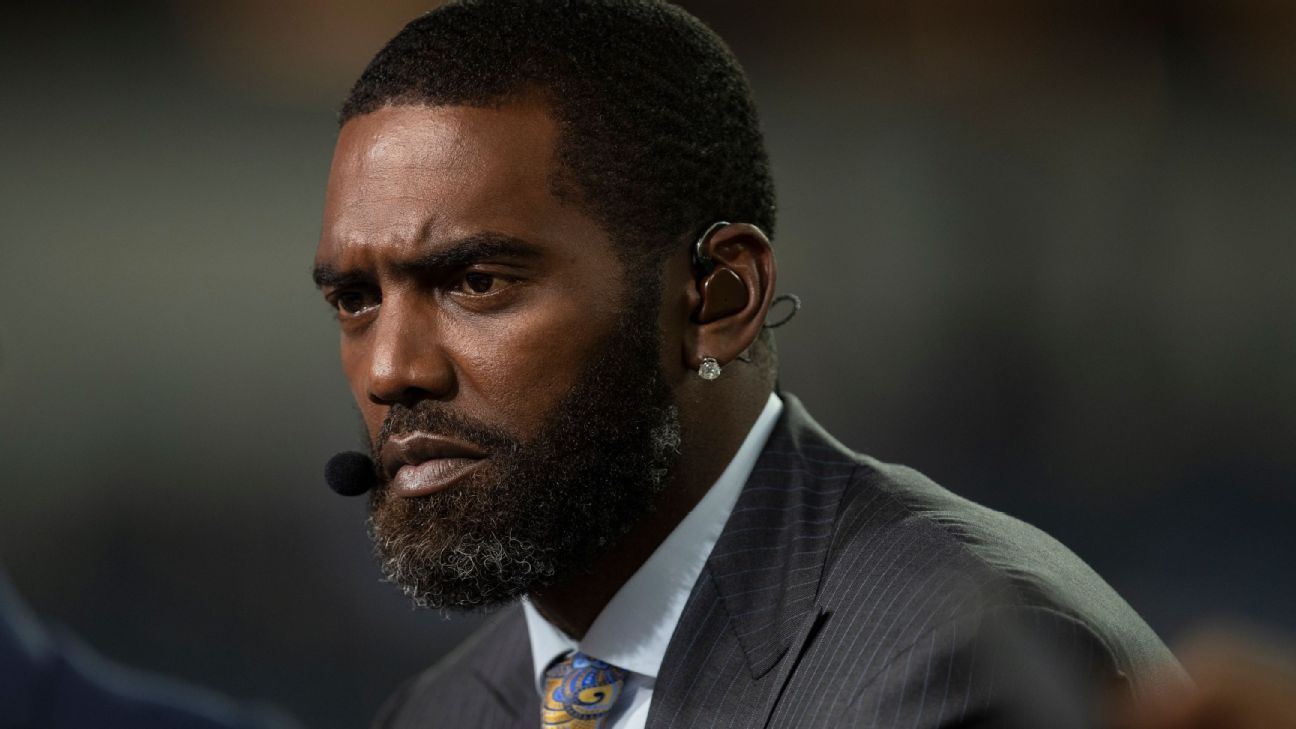Randy Moss Cancer Symptoms: A Comprehensive Guide
Randy Moss, the legendary wide receiver of the NFL, has left an indelible mark on the world of sports. However, the mention of Randy Moss cancer symptoms raises concerns that go beyond the gridiron. This article aims to provide a detailed and informative exploration of this topic, focusing on health awareness, symptoms, and actionable steps for early detection.
In recent years, public figures like Randy Moss have brought attention to critical health issues. Understanding Randy Moss cancer symptoms is not only important for fans but also for anyone who values their well-being. This article will delve into the symptoms, causes, and prevention strategies related to cancer, with insights relevant to Randy Moss's story.
By the end of this guide, you'll have a clearer understanding of how to recognize potential cancer symptoms, the importance of early detection, and the role of a healthy lifestyle in prevention. Let's explore this topic in-depth while maintaining a focus on health and wellness.
- What Happened To Cheryl Burke
- How Old Is Tom Brady
- Iain Armitage Net Worth
- Tyla Place Of Birth
- Where Is Chase Stokes From
Table of Contents
- Biography of Randy Moss
- Cancer Awareness and Randy Moss
- Overview of Cancer Symptoms
- Common Cancer Symptoms
- Diagnosis and Testing
- Prevention Strategies
- Treatment Options
- Lifestyle Changes for Prevention
- Building a Support Network
- Conclusion and Call to Action
Biography of Randy Moss
Randy Moss: The Legend
Randy Moss is one of the most celebrated wide receivers in NFL history. Born on February 13, 1977, in Rand, West Virginia, Moss's journey from a small town to the NFL is nothing short of inspirational. Below is a brief overview of his life and career:
| Full Name | Randy Gene Moss |
|---|---|
| Birthdate | February 13, 1977 |
| Birthplace | Rand, West Virginia |
| Position | Wide Receiver |
| Teams Played For | Minnesota Vikings, Oakland Raiders, New England Patriots, Tennessee Titans |
| Retirement | 2012 |
Cancer Awareness and Randy Moss
Randy Moss's involvement in raising awareness about cancer is a testament to his commitment to community and public health. While Randy Moss cancer symptoms may not directly involve him personally, his influence in spreading awareness about the disease is significant. Through partnerships with health organizations, Moss has encouraged fans and the public to prioritize early detection and prevention.
Overview of Cancer Symptoms
Cancer symptoms can vary depending on the type and stage of the disease. Early detection plays a crucial role in improving outcomes. Some general symptoms to watch for include persistent fatigue, unexplained weight loss, and changes in skin appearance.
- Taylor Swift And Boyfriend
- Bob Moore Red Mill
- Is Kylie Jenner White
- How Do I Get A Free Upgrade On Flights
- Taylor Swift Bikini Instagram
Recognizing Early Signs
Understanding the early signs of cancer is essential. Here are some common indicators:
- Persistent cough or hoarseness
- Unexplained bleeding or bruising
- Changes in bowel or bladder habits
- Thickening or lump in any part of the body
Common Cancer Symptoms
While cancer symptoms can vary, some are more prevalent than others. These symptoms often serve as red flags for further investigation:
Physical Symptoms
Physical symptoms of cancer may include:
- Swelling or lumps
- Chronic pain
- Difficulty swallowing
Psychological Symptoms
Psychological symptoms can also manifest, such as:
- Depression
- Anxiety
- Changes in mood or behavior
Diagnosis and Testing
Diagnosing cancer involves a series of tests and procedures. Early diagnosis significantly improves the chances of successful treatment. Common diagnostic methods include:
Imaging Tests
- X-rays
- CT scans
- MRI scans
Blood Tests
Blood tests can detect biomarkers associated with cancer. These tests help in identifying the presence and type of cancer.
Prevention Strategies
Prevention is key to reducing the risk of cancer. Making informed lifestyle choices can significantly lower the likelihood of developing the disease:
Healthy Diet
A balanced diet rich in fruits, vegetables, and whole grains is crucial. Limiting processed foods and red meat can also help reduce risk.
Regular Exercise
Engaging in regular physical activity not only promotes overall health but also reduces the risk of certain cancers.
Treatment Options
Treatment options for cancer depend on the type and stage of the disease. Common treatments include:
Surgery
Surgical removal of tumors is often the first step in treating localized cancer.
Chemotherapy
Chemotherapy uses drugs to destroy cancer cells and is effective for various types of cancer.
Lifestyle Changes for Prevention
Making lifestyle changes can have a profound impact on cancer prevention:
Quit Smoking
Smoking is a leading cause of cancer. Quitting can significantly reduce the risk of developing the disease.
Avoid Excessive Alcohol Consumption
Limiting alcohol intake is another effective way to lower cancer risk.
Building a Support Network
Having a strong support network is vital for individuals facing cancer. Emotional support from family, friends, and support groups can make a significant difference in the journey toward recovery.
Joining Support Groups
Support groups provide a platform for sharing experiences and coping strategies. They can be invaluable resources for those affected by cancer.
Conclusion and Call to Action
In conclusion, understanding Randy Moss cancer symptoms and the broader context of cancer awareness is crucial for personal and public health. Early detection, prevention, and a healthy lifestyle are key to reducing the impact of cancer. We encourage readers to:
- Stay informed about cancer symptoms and risk factors
- Regularly consult with healthcare professionals
- Share this article with friends and family to spread awareness
Together, we can make a difference in the fight against cancer. Thank you for reading, and we invite you to explore more content on our platform for additional insights into health and wellness.
Data and references for this article were sourced from reputable organizations such as the American Cancer Society and the National Cancer Institute, ensuring the highest standards of accuracy and reliability.
Article Recommendations
- Mori Lee Wedding Dresses
- The Monsters Eric And Lyle
- Who Is Dating Meghan Trainor
- Son Kat Von D
- Mr Cee Cause Of Death



Detail Author:
- Name : Dr. Bill Cormier
- Username : owolff
- Email : everette22@emmerich.com
- Birthdate : 1987-06-02
- Address : 26530 Trey Meadow Apt. 921 South Erikaburgh, HI 85938
- Phone : 209.790.0849
- Company : Schaden, Kuphal and Cole
- Job : Insulation Worker
- Bio : Quia molestias velit praesentium harum vel rerum blanditiis. Minus officiis et distinctio laudantium corrupti perferendis voluptatibus. Repudiandae veritatis pariatur consectetur perspiciatis.
Socials
instagram:
- url : https://instagram.com/rohanp
- username : rohanp
- bio : Ullam nostrum omnis soluta laborum illum. Sint nihil et enim accusamus.
- followers : 2564
- following : 1509
linkedin:
- url : https://linkedin.com/in/rohan2006
- username : rohan2006
- bio : Esse veritatis amet odit quaerat velit sint.
- followers : 1816
- following : 1240